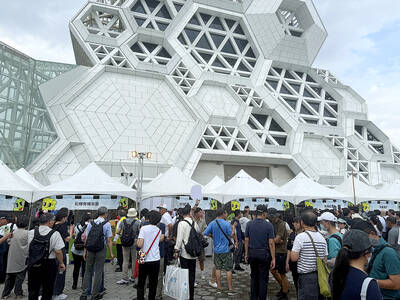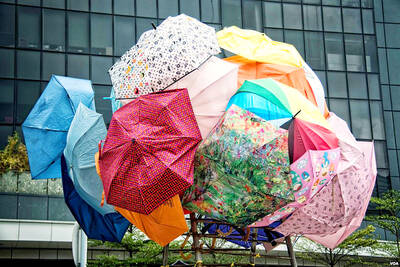The two-lane concrete bridge over a creek on one of Florida's rural state roads has almost no distinguishing feature, except, that is, for its name.
Nigger Jim Hammock Bridge in Hendry County is just one of 144 places throughout the US whose name or an official version of it includes the derogatory term for black people, a term seen as the ultimate, signature word for racism in America.
Many of these names are not widely known to still exist, according to local officials. But they continue to appear on some maps and a database kept by the federal government.
"The vestiges of Jim Crow discrimination throughout the South have some leftover elements. This is just part of that," said Earl Jones, a lawmaker in Greensboro, North Carolina who is sponsoring a bill to change such place names in his state.
"We've still got some cleaning up to do," he said in a telephone interview.
Jim Crow was not a person but a term which affected the lives of millions of people.
Named after a popular 19th century minstrel song that stereotyped African Americans, "Jim Crow" came to personify the system of government-sanctioned racial oppression and segregation in the US.
According to the United States Board of Geographic Names, 35 states have locations whose names include the derogatory word. California, the third-largest state by land area, has 26 such place names, followed by Nevada with 13.
Most of them label bodies of water -- streams, bays, reservoirs, creeks and lakes. Others are summits, valleys, trails or mines. Maryland has an island called Negro Island or Nigger Island in Wicomico County. Washington state has a Nigger Creek in Chelan County, according to the federal database.
In North Carolina, which has seven such sites, a bill which the Senate plans to take up would force counties to register new names with state officials who then will notify the US geography board.
Local legacy
The federal government took steps decades ago to erase the charged term from its use.
The US Board on Geographic Names, responsible for maintaining uniform geographic name usage throughout the federal government, universally changed in its federal database all names using "nigger" to "negro" in 1963 as well as all names using "Jap" to "Japanese" in 1971, according to Roger Payne, the federal board's executive secretary.
But such derogatory names may still exist on state and local maps, resulting in the dually listed "negro" and "nigger" sites in the federal database.
Payne said the database has more than 1,000 references to "negro" but that many, particularly in the US Southwest, may be uses of the Spanish word for black when referring to a geographic feature's appearance rather than to black people.
"Only 144 can be documented as using the pejorative form," he said, referring to "nigger" on maps.
Locally, use of the word in place names has taken much longer to disappear. Geographers and historians attribute that to both remnants of racism and a general opposition to change.
"For a lot of people, they don't see a problem with it. It's been around for ages," said Derek Alderman, geographer with East Carolina University. "They don't question why this feature is named the way it is."
"But I think this is much bigger, goes much further than the feature itself. It's a cultural representation," Alderman said. "Maps are important cultural records. They say a lot about society and about what people value."
Other offences
Some American Indian groups have long tried to get lawmakers to remove "squaw" from location names, arguing that the word is a derogatory term for women.
In the Florida Keys, Jewfish Creek has kept its name despite a petition by a Washington man who argued that it was anti-Semitic. While some efforts to change names have met with limited success, historians and geographers say movements to erase "the `N' word" are altogether less controversial.
"It's the ultimate politically incorrect thing," said David Pilgrim, professor at Ferris State University and director of the Jim Crow Museum in Big Rapids, Michigan.
He said legislation will not stop people now from referring to locations by offensive names, but that over time it may.
"That won't get rid of it in the local lore, in the many towns where people refer to `black bottom' or `niggertown' or `darkietown' in the local lingo," he said of legislation. "But eventually, when you change laws it makes a difference."

Water management is one of the most powerful forces shaping modern Taiwan’s landscapes and politics. Many of Taiwan’s township and county boundaries are defined by watersheds. The current course of the mighty Jhuoshuei River (濁水溪) was largely established by Japanese embankment building during the 1918-1923 period. Taoyuan is dotted with ponds constructed by settlers from China during the Qing period. Countless local civic actions have been driven by opposition to water projects. Last week something like 2,600mm of rain fell on southern Taiwan in seven days, peaking at over 2,800mm in Duona (多納) in Kaohsiung’s Maolin District (茂林), according to

Aug. 11 to Aug. 17 Those who never heard of architect Hsiu Tse-lan (修澤蘭) must have seen her work — on the reverse of the NT$100 bill is the Yangmingshan Zhongshan Hall (陽明山中山樓). Then-president Chiang Kai-shek (蔣介石) reportedly hand-picked her for the job and gave her just 13 months to complete it in time for the centennial of Republic of China founder Sun Yat-sen’s birth on Nov. 12, 1966. Another landmark project is Garden City (花園新城) in New Taipei City’s Sindian District (新店) — Taiwan’s first mountainside planned community, which Hsiu initiated in 1968. She was involved in every stage, from selecting

The latest edition of the Japan-Taiwan Fruit Festival took place in Kaohsiung on July 26 and 27. During the weekend, the dockside in front of the iconic Music Center was full of food stalls, and a stage welcomed performers. After the French-themed festival earlier in the summer, this is another example of Kaohsiung’s efforts to make the city more international. The event was originally initiated by the Japan-Taiwan Exchange Association in 2022. The goal was “to commemorate [the association’s] 50th anniversary and further strengthen the longstanding friendship between Japan and Taiwan,” says Kaohsiung Director-General of International Affairs Chang Yen-ching (張硯卿). “The first two editions

It was Christmas Eve 2024 and 19-year-old Chloe Cheung was lying in bed at home in Leeds when she found out the Chinese authorities had put a bounty on her head. As she scrolled through Instagram looking at festive songs, a stream of messages from old school friends started coming into her phone. Look at the news, they told her. Media outlets across east Asia were reporting that Cheung, who had just finished her A-levels, had been declared a threat to national security by officials in Hong Kong. There was an offer of HK$1m (NT$3.81 million) to anyone who could assist